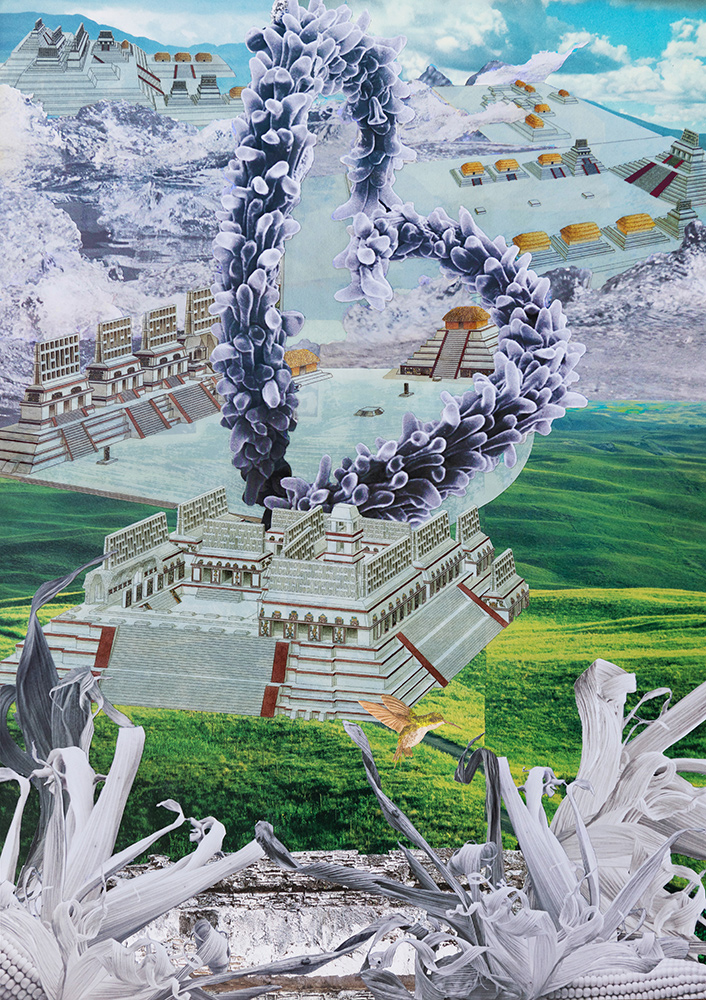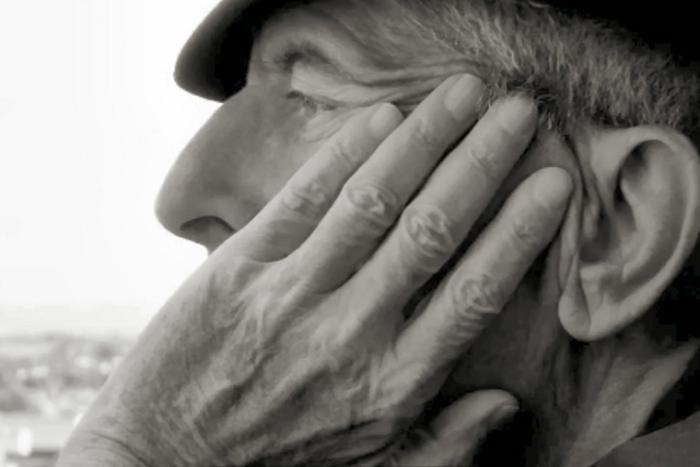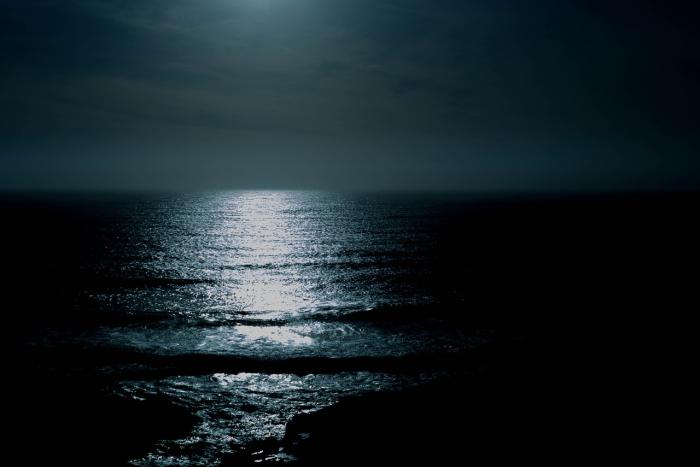
Mouthful is a monthly column about the author’s relationship with food, ten years into recovery from anorexia and bulimia.
I’ve been in Oaxaca, Mexico, for the last month at a research-based residency. With me are my girlfriend, who’s a writer, and our friend, who’s a chef. We’re co-authoring a book about water. We’ve been warned against drinking water from the tap. Deforestation, a growing population, agriculture, climate change, urban sprawl, the number of dams in Mexico (between 650 and 700), aging infrastructure, and broken wells have contaminated it. Neither can we wash our produce in tap water alone; we have to soak it in Microdyn drops to kill bacteria. This includes all produce: eaten raw, with a peel, or cooked. For the first ten days of our trip, gut flora was a frequent topic of conversation. We discussed it openly. We started each day with probiotic pills. Salad was a hazard. I shit at minimum four times a day, in such volumes as I’ve never seen leave my body. I don’t share this to be crude. It’s a fact.
Oaxaca City is located in a valley in the Sierra Madres. Water is brought down from the mountains and some of it is stored in rooftop cisterns. These black and white tanks pepper the skyline. We see them from the street and from the roof, where we eat—like my home city of New York, Oaxaca has a thriving roof culture. We eat meals in the sky as often as possible. Our chef uses produce she buys at the markets—the markets here are some of the best in the world. You’ve never had produce like we have in Oaxaca. Take your average Albertson’s tomato. Multiple it by ten. Turn the mealy mouthfeel into butter. Place it on top of avocado, on a chunk of sesame bread baked that morning. Sprinkle it with olive oil and sea salt. Follow with guava just picked from the tree. That’s what I had for lunch.
We drink Bialé brand water, which comes from the Sierra Norte. In Zapotec language, bialé means “new,” or, “that which is alive,” or, “that which springs pure.” Bialé prides itself on being socially responsible, conserving forests and creating opportunities for Oaxacan women. We pump their product out of a twenty-liter bottle in our kitchen. We use this water to make coffee and salvia tea, and to soak our vegetables, and refill our canteens. Though, I’ve been brushing my teeth with tap water out of laziness. Maybe not smart.
This year is the wettest Oaxaca has seen in ten, ending the worst drought in fifty. We learned this as soon as we landed. In early September, an 8.2 magnitude earthquake, the strongest Oaxaca had seen in a century, damaged thousands of homes and killed dozens of people. It rained so much that day that the Atoyac River, which had been dry for years, overflowed into the streets, filling the area around the airport with mud. September is the end of the wet season, but it’s rained almost every day since we arrived. Rain weighs down the pink pochote flowers on the tree outside our window. They fall to the stones of the courtyard.
*
Today, we toured the ethnobotanic garden, six acres of Oaxaca-native plants beside the Church of Santo Domingo. The irrigation of the garden begins with rainwater collected in an underground cistern. Half the garden consists of plants domesticated for food. Squash, maize, avocado, peppers, vanilla, chocolate, peanuts, papaya, prickly pears, and pineapple all were domesticated first in Oaxaca. Mole was invented here. Chapulines, grasshoppers, are a staple of the diet (and delicious). So is chia, and amaranth, a cereal grain like quinoa. I recommend amaranth in granola or with chocolate. I learned that citrus was introduced to the area, and so were tomatoes. That pulque is pre-Hispanic, but mezcal is not. That a certain fruit that looked exactly like a lime was poisonous.
We maintain a delicate balance between food as nourishment and its potential to make us sick. Just before leaving for our eleven o’clock tour, I began to experience food poisoning symptoms. This was more intense than indigestion, which I’d had for days—by the end of our two-hour walk through the garden, I was doubled over in pain. I could lie down and die. Our chef, true to her character, suggested eating.
We walked ten minutes to a nearby restaurant, where we always eat pozole. I ordered black beans and rice pudding. The food arrived and I ran to the bathroom. I thought I would vomit. I washed my hands twice because it seemed important. I returned to the table. Through tears, I told them that I was in pain. I couldn’t sit upright.
My girlfriend called a taxi, and we lay in bed for hours. My stomach looked pregnant. As I write this, I’m still in the bed. Something has taken up residence in my gut. If e. coli, the culprit is guava; if giardia, then water.
*
Bodies are disgusting. They smell, they shit, they’re prone to parasites, they die. They rot in the ground. They’re born, and for the first several years, someone else has to clean them. To survive with a body, I’ve had to make peace with the disgusting things my body does. It farts. Sometimes, it farts at embarrassing times (during interviews, during sex, in an elevator). My body feels pain. Since arriving in Mexico, each of our bodies has fallen ill: one with a urinary tract infection, another with swimmer’s ear, all three with varying degrees of food poisoning.
When we arrived, another woman at this residency told us a story about taking antibiotics. She had never done so in Mexico. The medicine here is different. Her breasts grew three sizes. So did her hips. She cried on and off for no reason. She told her doctor something was wrong. “Do you still get your period?” he asked. “Yes,” she said. “Then you’re fine.” He wrote her off as dramatic—a typical woman, simply hormonal. So our bodies, in addition to being disgusting, dwell always at the intersection of politics and personal need.
After air, water is our number one necessity. Under normal conditions, your body can live for three days to a week without it. I never think about this in New York. I take for granted that the water coming out of my tap is potable. That it will be there whenever I want it. I engage in a cycle of consumption while I write. I smoke weed; make tea; eat something; chew gum; refill my water glass. I repeat this for as long as I sit in front of my computer.
In Oaxaca, this cycle of consumption is broken. I don’t live alone. I’m at the whim of others’ schedules. I’m in an unfamiliar place. The food here is different, the water is different, I don’t have weed. It’s amazing how quickly I’ve had to adjust, how my expectations for what is necessary to my existence have shifted with circumstances.
*
The question in Oaxaca is not whether you’ll get it; food poisoning here is a way of life. One of the women who runs this residency—there are only women here—told us last night that she expects to get sick every couple of weeks. She’s lived here for years. We eat food that we know will make us ill. It’s delicious, socially necessary, and what is available. It’s customary to drink sodium bicarbonate soda in the morning to control stomach acid. Everyone here gets gastritis from the spice. The other day, I watched a little girl from the house next door dunk her raw apple in an open basin of water in the backyard, then place the apple directly into her mouth. The apple nourishes her. The water can make her sick.
Sickness reminds us that our bodies are porous. We pretend that we are outside of nature, but in fact wherever we are, we are part of an ecosystem. Our bodies may fight against or attempt to dominate the ecosystem, and may succeed for a little while. We live on Earth until we die.
Whatever has invaded my gut reminds me that my body is a continuation of what is around me. My body has never been clean. From the moment I was born, I was breathing tainted air. Car fumes, cleaning agents, secondhand smoke. My breasts store chemicals off-gassed by my sofa, chlorine from my drinking water, fluoride that I gargled in elementary school. We pass these down to our children in fluid. The fluid nourishes them; it also is toxic; they store it in their bodies. Eventually, all of the things I have taken into my body over the course of my life will kill me. It is already happening. It’s been happening from the start.
I used to think I could make myself pure. I fasted for days. Amennorhea set in—I stopped menstruating. I stopped shitting; there was nothing to shit. I drank water. I took laxatives to clean more shit from my gut. I drank tea. I believed if I were pure, then I could escape death. If there were nothing rotten about me, then my body would never rot. I would be a body of light. Starvation as spiritual cleansing. It too could have killed me.
*
There is no such thing as keeping the outside out here. Even the library has a thatched section of roof. Traditional medicine comes from the land. Maguey nectar has been used since the Mesoamerican period. Aguamiel, or “honey water,” it is known to treat ailments of the lungs and kidneys, can be used as an antioxidant, is high in vitamins A, B, and C, as well as iron and protein. You know aguamiel as agave nectar. It’s also used to make pulque and mezcal. Mezcal is also a traditional medicine. You rub it on your skin, or take it into your mouth. You mix it with herbs. You drink it with food to bring nourishment. Mezcal is the liquid of the divine feminine. You should know that the maguey plant is the only plant given a deity. Mayahuel. She has four hundred nipples.
There are fifteen maguey varieties used to make mezcal. Each has a different taste. Every bottle of mezcal tastes different. Any number of different factors affect its flavor: the soil in which the maguey grow; whether they grow alongside beans or corn or squash—the three sisters crops, or milpe; whether harvested in the spring or summer; grown at a high altitude; cured in oak, pine, stone, bull skin, or plastic; sold in wood or plastic or glass.
Mezcal is never only for consumption. To drink it this way is a waste; you could get drunk for much cheaper on tequila (which, technically, is a form of mezcal). You can drink yourself to death if you want to, but mezcal is a spiritual experience. It connects to the land in which it’s made, and is inextricable from its history—not only the history of the bottle, but the history of the family that makes it, and the history of mezcal, itself. Like the bacteria in your gut, the history of mezcal precedes modern civilization. There’s a bottle of mezcal in every room of this residency. We drink it out of tiny clay cups made by women in a nearby village. They are sculpted into the shapes of heads, as if we’re pouring mezcal directly into our brains. As if we’re taking the land inside.





